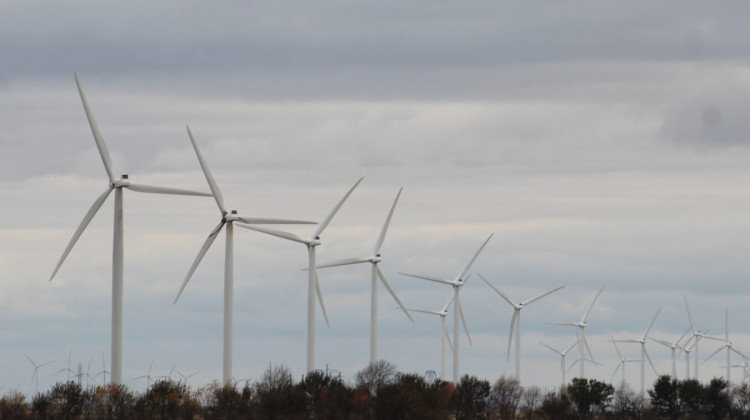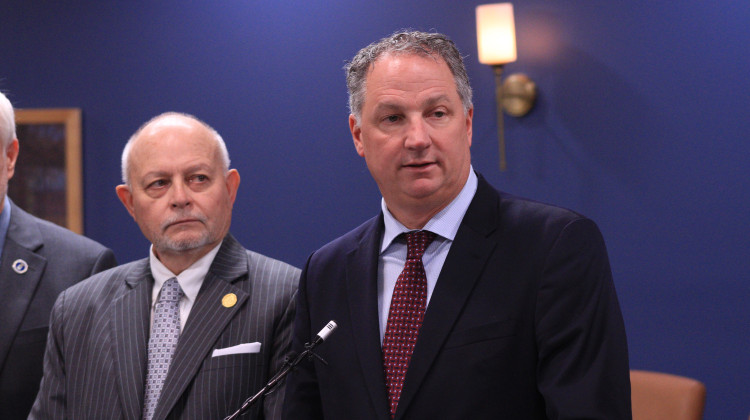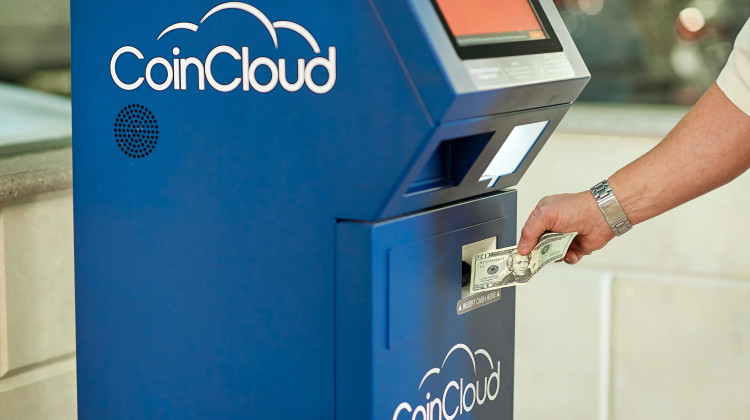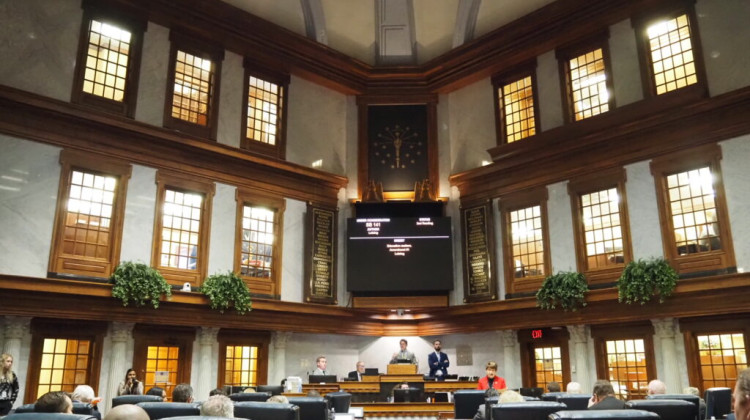
To estimate how much each state action could reduce emissions, IDEM set targets based on what it felt was achievable for Indiana. Advocates say, at least for now, those targets are not very ambitious.
Ben Thorp / WBAAIndiana and 44 other states have released their initial plans to reduce greenhouse gas emissions with the help of a federal grant.
Climate advocates say there’s a lot to love in Indiana’s plan — but the Indiana Department of Environmental Management is likely underestimating what the state can achieve.
Indiana’s climate action plan prioritizes things like expanding renewable energy and green industrial processes, making buildings more energy efficient, adopting electric vehicles, reducing food waste, and filling out Indiana's urban tree canopy.
Sam Carpenter is the executive director of the Hoosier Environmental Council. He said IDEM has a lot of opportunity with this climate plan to not just reduce pollution, but also to create jobs in industries that manufacture solar panels and batteries for electric vehicles.
While this is a first for the state, at least a dozen Indiana cities have already made climate action plans.
Therese Dorau is the assistant director for climate policy and implementation at Indiana University's Environmental Resilience Institute — which has helped many of these cities create greenhouse gas inventories. She said IDEM did a good job building on the work communities have already done.
“I'd like to see local governments empowered to take action, especially those that already have climate action plans. IDEM could facilitate that by offering pass through funding and technical expertise that allow cities to really accelerate implementing their own climate action plans," Dorau said.
To estimate how much each state action could reduce emissions, IDEM set targets based on what it felt was achievable for Indiana. For example, getting 40 percent of the state’s energy from wind and solar by 2050.
But this is far below the Biden administration’s goal of carbon-free electricity by 2035 and the regional grid operator MISO’s estimate that it could get half its energy from renewables by 2042.
“We're kind of already on track for a lot of these numbers, so I'm not sure how they're really pushing the state that much," said Carpenter from the Hoosier Environmental Council.
The plan also doesn't include policy suggestions for Indiana lawmakers or the Environmental Rules Board.
Join the conversation and sign up for the Indiana Two-Way. Text "Indiana" to 765-275-1120. Your comments and questions in response to our weekly text help us find the answers you need on climate solutions and climate change at ipbs.org/climatequestions.
This initial climate plan is only the first step. Indiana is expected to submit a more comprehensive plan to the federal government by fall of next year.
Advocates hope that plan will be more ambitious and that IDEM will go even further to involve communities that suffer the most from climate change.
Paula Brooks is the director of environmental justice for the Hoosier Environmental Council. She said often only residents who are motivated to participate show up to meetings on things like the state climate plan.
Brooks said meeting citizens where they are and helping them understand how it could benefit them — such as improving their health through better air quality — takes time.
"A lot of times stakeholders and the state will go in with community engagement and look for a resident leader to help them, but they're not willing to pay and this person is volunteering. There's a lot of fatigue that happens. So I would just like to see a total reevaluation or new direction in terms of that engagement period," she said.
Rebecca is our energy and environment reporter. Contact her at rthiele@iu.edu or follow her on Twitter at @beckythiele.
 DONATE
DONATE






 Support WFYI. We can't do it without you.
Support WFYI. We can't do it without you.